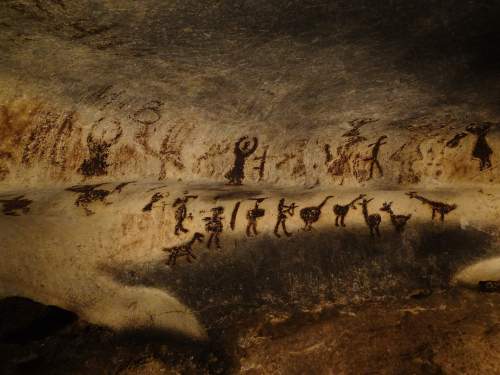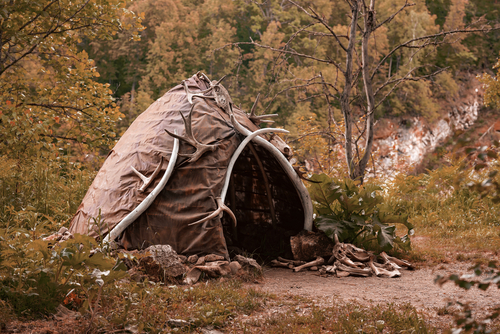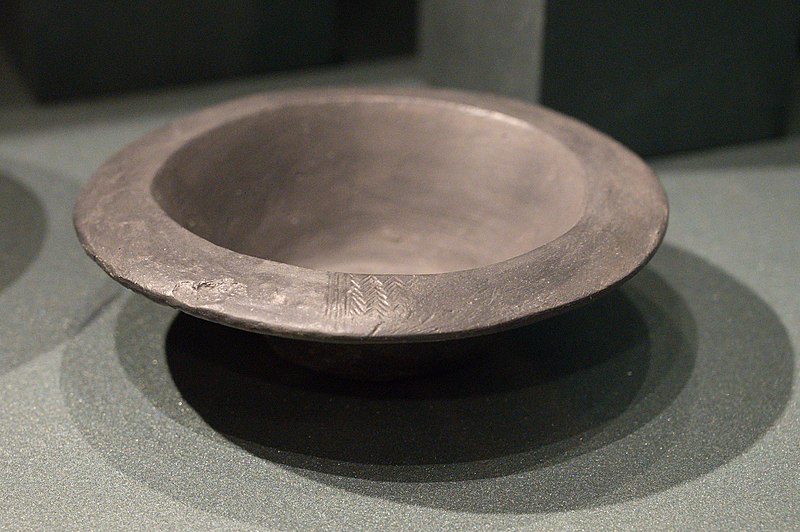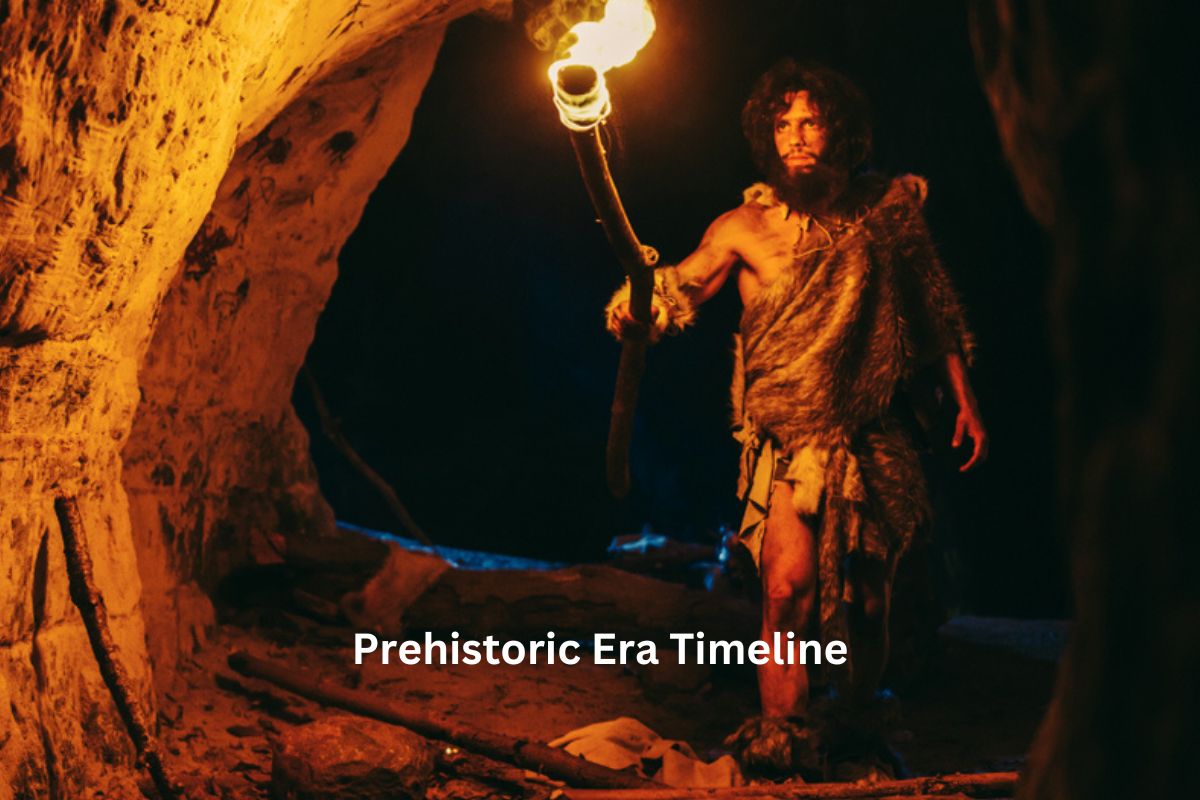The prehistoric era encompasses a vast span of human history before the advent of written records. It is divided into several key periods, each marked by significant developments in technology, culture, and society.
These eras include the Paleolithic, Mesolithic, and Neolithic periods, characterized by the evolution of early humans, the transition to settled agriculture, and the emergence of organized communities.
Subsequently, the Chalcolithic, Bronze Age, and Iron Age saw the introduction of metalworking, the rise of powerful civilizations, and profound changes in human civilization.
This overview provides a glimpse into the remarkable journey of human development during these prehistoric epochs.
| Prehistoric Era | Time Period | Key Developments and Characteristics |
|---|---|---|
| Paleolithic Era | 2.5 million – 10,000 BCE | – Early stone tools (Oldowan, Acheulean) |
| – Emergence of anatomically modern humans | ||
| – Cave art and advanced tools (Upper Paleolithic) | ||
| Mesolithic Era | 10,000 – 8,000 BCE | – Transition period, advanced tools |
| Neolithic Era | 8,000 – 3,000 BCE | – Agricultural Revolution, settled agriculture |
| – Domestication of plants and animals | ||
| – Pottery, weaving, organized religions | ||
| Chalcolithic Era | 3,000 – 2,000 BCE | – Transition between Neolithic and Bronze Age |
| – Introduction of copper tools and artifacts | ||
| Bronze Age | 3,000 – 1,200 BCE | – Use of bronze tools and weapons |
| – Emergence of major civilizations (e.g., Sumerians) | ||
| Iron Age | 1,200 BCE – 1 CE | – Transition to iron tools and weapons |
| – Rise of empires (e.g., Greeks, Romans) |
Timeline of the Prehistoric Era
Paleolithic Era (2.5 million – 10,000 BCE):
Early Stone Tools: In the early stages of the Paleolithic era, our prehistoric ancestors began using basic stone tools. The Oldowan tools, dating back around 2.5 million years, were some of the earliest known implements used for cutting and chopping.
Also Read: Neolithic Age Timeline
Later, during the Acheulean period (from about 1.7 million years ago), more refined handaxes and cleavers were crafted.
Emergence of Anatomically Modern Humans: Over the course of the Paleolithic era, anatomically modern humans (Homo sapiens) evolved. They displayed increasing cognitive abilities and sophisticated tool-making skills.
These early humans were hunter-gatherers, relying on hunting wild animals and gathering edible plants for sustenance.

Cave Art and Advanced Tools: The Upper Paleolithic period (around 40,000 BCE to 10,000 BCE) is known for the creation of intricate cave art, such as those found in Lascaux and Chauvet caves in France. These artworks provide insights into the symbolic and artistic capabilities of our prehistoric ancestors.
Also Read: Bronze Age Facts
Additionally, advanced tools like blades and burins were developed during this time, showcasing significant technological advancements.
Mesolithic Era (10,000 – 8,000 BCE):
Transition Period: The Mesolithic era marked a transitional phase between the Paleolithic and Neolithic eras. It was characterized by a shift towards more settled lifestyles and the gradual adoption of agriculture and animal husbandry. This period witnessed changes in tool-making techniques and social organization.
Advanced Tools: Mesolithic people continued to refine their stone tools, creating smaller, more precise implements. Tools such as microliths (small stone blades) were used for hunting, cutting, and various other tasks. These innovations allowed for greater efficiency in resource exploitation.
Neolithic Era (8,000 – 3,000 BCE):
Agricultural Revolution: One of the most significant developments in human history occurred during the Neolithic era—the Agricultural Revolution. People began cultivating crops like wheat, barley, and rice, as well as domesticating animals such as cattle, sheep, and goats.
This shift from a nomadic, hunter-gatherer lifestyle to settled farming communities had profound effects on society, enabling larger populations and more complex social structures.
Domestication: Neolithic communities engaged in the systematic breeding and domestication of plants and animals. This allowed for a stable and predictable food supply, reducing the need for constant mobility.

Pottery and Weaving: The Neolithic era also saw the invention of pottery and the development of weaving techniques, which aided in food storage and clothing production. These innovations improved daily life and allowed for the storage and transport of surplus food.
Emergence of Organized Religions and Social Hierarchies: With the advent of settled communities and surplus food, religious and spiritual beliefs began to take shape. Temples and ritualistic practices became more elaborate.
Additionally, social hierarchies emerged, with some individuals or groups assuming leadership roles within these early societies.
Chalcolithic Era (Copper Age, 3,000 – 2,000 BCE):
Transition to Metalworking: The Chalcolithic era, also known as the Copper Age, marked a transition between the Neolithic and Bronze Age. During this time, people began to work with copper, one of the earliest metals used for tools and ornaments.
Copper, while relatively soft, was a significant advancement from stone tools, allowing for more efficient cutting and shaping.
Introduction of Copper Tools and Artifacts: Copper tools, such as axes, knives, and jewelry, became increasingly common. These early metalworking techniques laid the foundation for the subsequent Bronze Age, where copper was alloyed with tin to create stronger and more durable bronze tools and weapons.

Bronze Age (3,000 – 1,200 BCE):
Use of Bronze: The Bronze Age was characterized by the widespread use of bronze, an alloy made by combining copper and tin. Bronze tools and weapons were stronger and more durable than their copper counterparts, leading to significant advances in agriculture, craftsmanship, and warfare.
Emergence of Major Civilizations: The Bronze Age saw the emergence of several major civilizations, including the Sumerians in Mesopotamia, the Egyptians along the Nile, the Indus Valley Civilization in South Asia, and the Minoans on the island of Crete. These cultures developed sophisticated societies with writing systems, advanced architecture, and complex social structures.
Cultural Achievements: Bronze Age cultures left behind a rich legacy of art, literature, and monumental architecture. Notable achievements include the construction of pyramids in Egypt, ziggurats in Mesopotamia, and the development of early writing systems like cuneiform and hieroglyphics.
Iron Age (1,200 BCE – 1 CE):
Transition to Iron Tools and Weapons: The Iron Age marked a significant technological shift as people began to work with iron. Iron tools and weapons were more readily available and cheaper to produce than bronze, leading to widespread adoption. Iron was not only stronger but also more abundant.
Rise of Empires: The Iron Age witnessed the rise of powerful empires and civilizations, including the Greek city-states, the Roman Republic and Empire, the Persian Empire, and the Maurya Empire in India. These empires expanded their territories through conquest and diplomacy, often leaving a lasting impact on the regions they controlled.
Advancements in Writing and Knowledge: Iron Age societies made advancements in writing and knowledge. The Greeks made significant contributions to philosophy, mathematics, and science. The Romans built upon Greek knowledge and developed a vast system of laws and governance.
